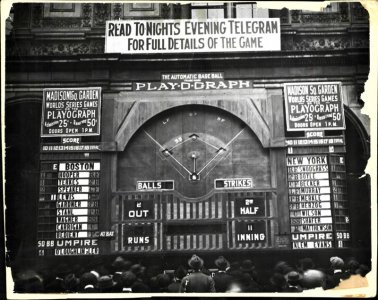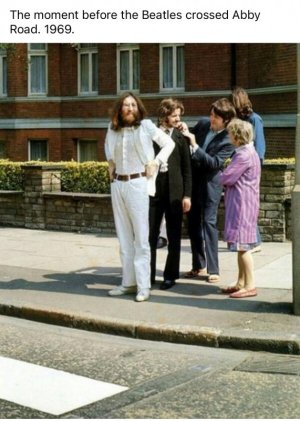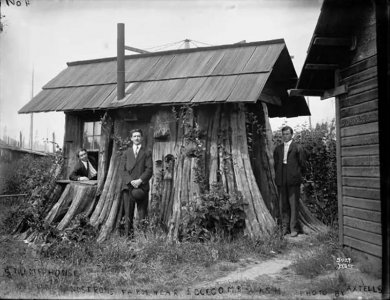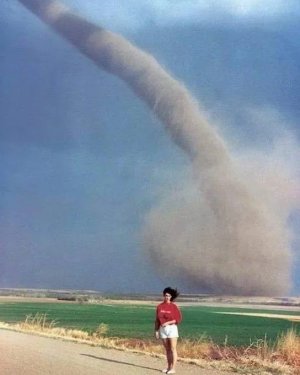You are using an out of date browser. It may not display this or other websites correctly.
You should upgrade or use an alternative browser.
You should upgrade or use an alternative browser.
Repository for Vintage Photographs That Tell a Story - Share Here...
- Thread starter SmoothSeas
- Start date
Mizmo
Well-known Member
- Location
- Ontario Canada
CinnamonSugar
A Quiet American
O M Gosh. I feel like someone poked a fork in my eye!No story..
I am ancient and I don't think I ever saw a man dressed that way.
........be still my beating heartView attachment 343553
View attachment 343551
PeppermintPatty
🔷 💜 🔷
Thank goodness.No story..
I am ancient and I don't think I ever saw a man dressed that way.
PeppermintPatty
🔷 💜 🔷
This is so cool.
There’s a woman just up the road from us who is building her own home, on a lot she bought , from small trees - mostly birch and pine.
. It’s a bit bigger than this. She’s having a hard time getting electricity to it. The general rule here is that you have to have a septic system and a well to qualify for electricity. Before building this she was living in a modified garbage bin. ( literally )
This is so cool.
There’s a woman just up the road from us who is building her own home, on a lot she bought , from small trees - mostly birch and pine.
. It’s a bit bigger than this. She’s having a hard time getting electricity to it. The general rule here is that you have to have a septic system and a well to qualify for electricity. Before building this she was living in a modified garbage bin. ( literally )
That is interesting. Resourceful and possibly cheaper. If legalities don't get ironed out it may not be.
PeppermintPatty
🔷 💜 🔷
I think she will get busted sooner or later. What’s she’s doing isn’t legal but we certainly aren’t going to rat her out. I think she’s very brave to be doing what she’s doing. She’s got to be in her 50’s or 60’s. It’s actually impressiveThat is interesting. Resourceful and possibly cheaper. If legalities don't get ironed out it may not be.
Fans in NYC following a game of the 1912 World Series by watching a Playograph. What's a playograph ?
From the Wikipedia:
"
The Playograph was a machine or an electric scoreboard used to transmit the details of a baseball game in the era before television. It is approximated by the "gamecast" feature on some sports web sites: it had a reproduction of a baseball diamond, with an inning-by-inning scoreboard, each team's lineup, and it simulated each pitch: a ball, a strike, a hit, an out, and so on.
A telegraph operator, who was watching the game live, transmitted the details of the baseball game to the two people operating the Playograph. An "X" on the diamond represented a runner; an "O" was displayed if the runner got out. A ball was moved animatronically to show fastballs or curveballs, where it was hit, and so on."

From the Wikipedia:
"
The Playograph was a machine or an electric scoreboard used to transmit the details of a baseball game in the era before television. It is approximated by the "gamecast" feature on some sports web sites: it had a reproduction of a baseball diamond, with an inning-by-inning scoreboard, each team's lineup, and it simulated each pitch: a ball, a strike, a hit, an out, and so on.
A telegraph operator, who was watching the game live, transmitted the details of the baseball game to the two people operating the Playograph. An "X" on the diamond represented a runner; an "O" was displayed if the runner got out. A ball was moved animatronically to show fastballs or curveballs, where it was hit, and so on."

Pink Biz
SF VIP
- Location
- Suburban Chicago

Oris Borloff
Member
CinnamonSugar
A Quiet American
Uhhhh, I would not be standing there having my pic taken!This photo was the winner in an amateur photo contest. It appeared as the cover on a supplement to the Sunday Omaha World-Herald which was called The Magazine Of The Midlands. Where I found this copy of the pic said it was April of 1989.
View attachment 344773





